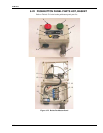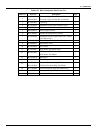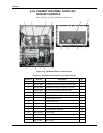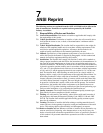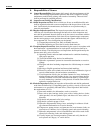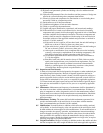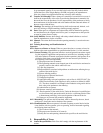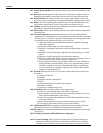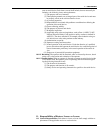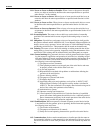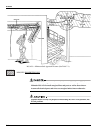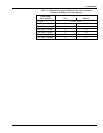
XLB-4319
7-6
10.1 General Responsibilities. Each operator shall comply with the requirements of this
ection.
peration. During operation of th
s
10.2 O e aerial device all platform occupants shall use
10.3 W
device in or on the work platform for achieving additional working height or reach.
v
10.5 L g. Any loading which includes a horizontal load shall be avoided unless the
10.6 O
a s.
d
ts prior to each day’s operation. The following tests and inspections shall
-
d other fasteners for loose, deformed or
devices. Any suspected items shall be
s unsafe items shall be
re use.
ards suc
(
( ions.
(5) O
(6) W
(7) P
h use the operator shall:
lectrical conductors.
r-
d
(3)
10.9 M ng in mobile operation the operator shall deter-
mine ly designed for mobile operation.
shall be permitted to operate the
aeri
0.11 Training, Retraining, and Familiarization of Operators.
10.11
cognition and avoidance of hazards associated with their operation, shall op-
appropriate fall protection connected to the aerial device at the platform position.
ork Platform. The operator shall not use railings, planks, ladders or any other
10.4 Brakes. The vehicle parking brake(s) shall be set at all times that the boom is ele-
ated except when the aerial device is being used in accordance with 9.5.
oadin
mobile unit is designed for that application.
bservations. Observations during operation for any defects shall be conducted on
n ongoing basi
10.6.1 Pre-start Inspection. Items determined by the owner in accordance with the
manufacturer’s recommendations for each specific aerial device shall be inspecte
for defec
be performed by the operator once daily, prior to first use:
(1) Operating controls and associated mechanisms for conditions interfering
with proper operation.
(2) Visual and audible safety devices for malfunction.
(3) Hydraulic or pneumatic systems for observable deterioration or excessive
leakage.
(4) Fiberglass and other insulating components for visible damage or contami
nation.
(5) Missing or illegible operational and instructional markings.
(6) Electrical systems of/or related to the aerial device for malfunction, signs of
excessive deterioration, dirt and moisture accumulation.
(7) Visual inspection of bolts, pins, an
missing fasteners and other locking
carefully examined or tested and a determination made by a qualified per-
on as to whether they constitute a safety hazard. All
replaced or repaired befo
10.7 Worksite. Before the aerial device is used the worksite shall be surveyed for haz-
h as:
1) Untamped earth fills.
(2) Ditches.
3) Dropoffs and floor obstruct
(4) Debris.
verhead obstructions and electrical conductors.
eather conditions.
resence of unauthorized persons.
10.8 Precautions. Before and during eac
(1) Check for overhead obstructions and e
(2) Insure that the load on the platform and/or load lifting devices are in acco
ance with the manufacturer's rated capacity.
Insure that outriggers and stabilizers are used if the manufacturer's instruc-
tions require their use.
(4) Insure that guardrails are properly installed, and the gates are closed.
(5) Use outrigger pads when necessary to provide firm footing.
obile Operation. Before engagi
that the aerial device is specifical
10.10 Personnel. Only trained and authorized personnel
al device.
1
.1 General Training. Only personnel who have received general instructions re-
garding the inspection, application and operation of aerial devices, including
re



